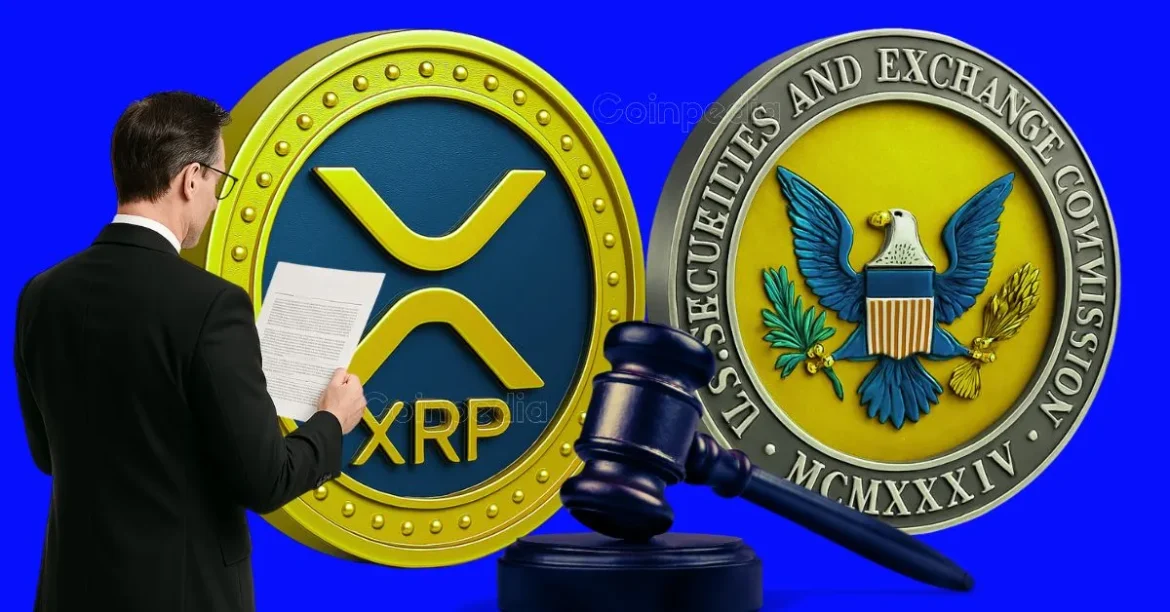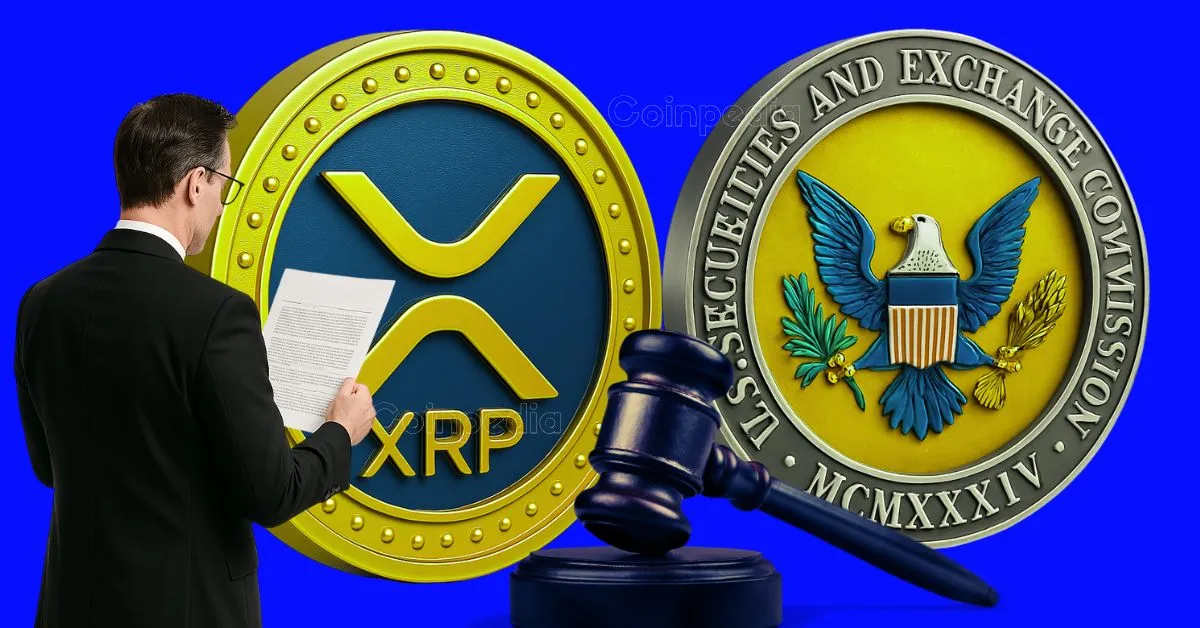The Ripple vs. SEC Saga: A Pivotal Battle for Crypto’s Future
Introduction: A Legal Battle with Global Implications
The legal confrontation between Ripple Labs and the U.S. Securities and Exchange Commission (SEC) has transcended the boundaries of a typical corporate lawsuit. This high-stakes battle has become a defining moment for the cryptocurrency industry, shaping regulatory frameworks, influencing market dynamics, and sparking intense debates within the crypto community. The case, which began in December 2020, has evolved into a complex narrative that intertwines legal intricacies, market volatility, and political undertones.
The Genesis of the Conflict: SEC’s Allegations
The SEC’s lawsuit against Ripple Labs centered on the classification of XRP, Ripple’s native digital asset. The regulatory body alleged that Ripple had conducted an unregistered securities offering by selling XRP to investors. The crux of the SEC’s argument was that XRP should be classified as a security, not a currency, under the Howey Test. This legal framework determines whether an asset qualifies as an investment contract, which would require registration with the SEC.
The SEC’s claims sent shockwaves through the crypto market, particularly for XRP holders. The value of XRP plummeted by over 300% between 2021 and 2024, reflecting the market’s uncertainty and the potential implications of the lawsuit. The SEC’s stance also raised broader questions about the regulatory status of other cryptocurrencies, creating a ripple effect (pun intended) across the entire industry.
Ripple’s Defense: Utility and Global Vision
Ripple’s defense strategy was multifaceted, focusing on the utility of XRP and its global ambitions. The company argued that XRP functions as a currency and a utility token, facilitating cross-border payments and offering faster, cheaper transaction processing compared to traditional financial systems. Ripple contended that XRP lacked the characteristics of a security, as it did not grant holders ownership rights or a share in the company’s profits.
Ripple’s vision for XRP extends beyond mere transactions. The company aims to position XRP as a bridge currency for international transactions, partnering with central banks and financial institutions to leverage XRP’s technology for efficient and cost-effective payment solutions. This global vision underscores Ripple’s commitment to innovation and its potential to disrupt traditional financial systems.
Key Rulings and Legal Milestones
The Ripple vs. SEC case has been marked by several critical rulings that have shaped its trajectory. One pivotal moment came in July 2023, when Judge Analisa Torres ruled that XRP sold on secondary markets did not constitute a security. This decision was seen as a partial win for Ripple, providing some clarity on the regulatory status of XRP and boosting market confidence.
However, the judge also ruled that Ripple’s direct sales of XRP to institutional investors did meet the criteria of a security offering. This mixed outcome has led to ongoing legal wrangling and uncertainty about the final resolution of the case. The SEC’s potential appeal of the July 2023 ruling keeps the case open, casting a shadow of uncertainty over Ripple and the broader crypto market.
The Lingering Shadow: Appeals and Delays
Despite Ripple CEO Brad Garlinghouse’s assertion that the case is “behind them,” the legal battle is far from over. The SEC’s potential appeal of the July 2023 ruling has prolonged the uncertainty, frustrating the XRP community and raising questions about the SEC’s motives. The ongoing legal limbo has also sparked debates about the SEC’s approach to regulating the crypto market and the potential for political influence in the case.
The delays have had a tangible impact on the crypto market, with investors and stakeholders eagerly awaiting clarity. The uncertainty has also raised concerns about the SEC’s regulatory framework and its ability to adapt to the rapidly evolving crypto landscape.
Community Discord: Ripple vs. XRP Holders?
An unexpected twist in the Ripple saga has emerged: a growing tension between Ripple Labs and XRP holders. While Ripple has been focused on defending itself against the SEC’s allegations, some XRP holders feel that the company has not adequately represented their interests. This discord stems from concerns about Ripple’s control over a significant portion of the XRP supply.
Critics point out that Ripple holds approximately 4.5 billion XRP in its active wallets, raising questions about market manipulation and the potential for dumping XRP on retail investors. This issue has fueled debates within the XRP community, with some holders calling for greater transparency and accountability from Ripple.
Settlement Scenarios: A Path Forward?
As the Ripple vs. SEC case drags on, settlement talks have become a recurring topic of discussion. A settlement would allow Ripple to gain more operational freedom while potentially requiring the company to pay a fine. Estimates suggest that a settlement could be reached for less than $125 million, a figure that would be seen as a victory for Ripple compared to the billions the SEC initially sought.
However, the SEC’s insistence on maintaining regulatory control over XRP and the broader crypto market remains a significant hurdle. Any settlement would likely include provisions that ensure Ripple’s compliance with securities laws, potentially limiting its future activities. The outcome of these settlement talks will have far-reaching implications for Ripple, the XRP community, and the crypto industry as a whole.
Beyond the Lawsuit: Ripple’s Strategic Pivot
While the legal battle with the SEC has dominated headlines, Ripple has been actively pursuing other strategic initiatives. These include exploring the use of XRP by central banks, developing a stablecoin pegged to the U.S. dollar, and expanding its enterprise blockchain solutions.
Ripple’s stablecoin venture represents a significant shift, positioning the company to compete in the rapidly growing stablecoin market. However, it also faces challenges, including regulatory scrutiny and competition from established players like Tether and Circle. Ripple’s strategic pivot underscores its commitment to innovation and its ability to adapt to the evolving crypto landscape.
Political Undercurrents: Is There More Than Meets the Eye?
The Ripple vs. SEC case has also raised eyebrows due to alleged political ties and conflicts of interest. Critics have pointed to connections between SEC officials and law firms involved in the case, suggesting that political motivations may be influencing the SEC’s actions.
These allegations, while unproven, have fueled conspiracy theories and further eroded trust in the SEC’s impartiality. The perception that the SEC is unfairly targeting Ripple has galvanized support for the company within the crypto community. The political undertones of the case have added another layer of complexity, highlighting the intersection of regulation, politics, and the crypto industry.
Conclusion: A Defining Moment for Crypto Regulation
The Ripple vs. SEC case is more than just a legal dispute between a company and a regulatory agency. It is a defining moment for the cryptocurrency industry, with far-reaching implications for regulation, innovation, and the future of digital assets. Regardless of the final outcome, the case has already left an indelible mark on the crypto landscape, shaping the way regulators approach digital assets and forcing companies to navigate a complex and evolving legal framework.
The resolution of this case will likely set precedents that guide the regulation of cryptocurrencies for years to come, influencing how digital assets are classified, how they are sold, and how companies in the crypto space operate. The Ripple vs. SEC saga serves as a reminder of the challenges and opportunities that lie ahead for the crypto industry, as it continues to evolve and adapt to the ever-changing regulatory landscape. Only time will tell how this drama will unfold, but one thing is certain: the world is watching.





